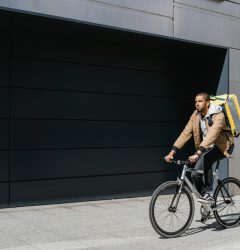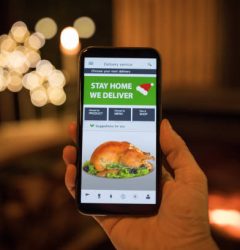28 Jul

Expanding your delivery business to new markets or serving multicultural communities within your region requires more than just logistical planning—it requires language accessibility. In a globalized economy, offering a multilingual platform isn’t a luxury; it’s a strategic advantage.
This blog explores the importance of running a multilingual delivery system, key features to implement, and how platforms like Zeew simplify the process for businesses aiming to scale across borders.
Why Going Multilingual Matters in Delivery
Reaching Wider Audiences
A multilingual platform allows you to tap into international markets or serve communities with diverse language needs. For example, a food delivery business in a city like Dubai may need to support English, Arabic, Hindi, and Tagalog to meet customer expectations.
Building Trust and Loyalty
When users can browse and order in their native language, they’re more likely to complete purchases and return. A personalized experience builds credibility and strengthens brand loyalty.
Reducing Customer Support Requests
Language barriers often lead to confusion, incorrect orders, or failed deliveries. A multilingual interface helps eliminate misunderstandings, reducing the need for customer support interventions.
Key Features of a Multilingual Delivery System
To operate a multilingual delivery platform effectively, certain technical and user experience features are essential:
Localized App and Website Interface
Your delivery platform should detect the user’s location or allow them to select their preferred language manually. All core functions—menus, buttons, navigation, and checkout—should be translated, not just product names.
Multi-language Push Notifications and Emails
Operational updates such as order confirmations, delivery notifications, and marketing messages should be sent in the customer’s selected language to ensure clarity and engagement.
Custom Language Management
A robust admin panel should allow you to add or edit translations without involving developers. This enables faster updates and localization as you grow.
Vendor and Driver Language Support
The platform should allow each user group—vendors, drivers, and customers—to access the system in their preferred language. This ensures smooth communication and fewer operational hiccups.
Best Practices for Serving Diverse Markets
Research Your Audience
Identify the languages spoken in your current or target markets. Analytics tools and customer surveys can provide insights into language preferences.
Avoid Relying on Machine Translation
Automated translation tools like Google Translate often miss the nuance required for professional communication. Invest in native speakers or localization services to ensure accuracy.
Test Each Language Experience
Ensure your platform supports both left-to-right (LTR) and right-to-left (RTL) languages. For instance, Arabic and Hebrew interfaces require mirrored layouts for proper usability.
Promote Your Multilingual Capabilities
Clearly communicate that your platform supports multiple languages. Highlight this feature on your website, social media, app store listings, and customer emails.
How Zeew Simplifies Multilingual Delivery
Managing multiple languages doesn’t need to be complicated. Zeew’s delivery platform is designed to support multilingual operations with ease:
-
Multi-language functionality built into both customer and driver apps
-
Centralized language management through the admin dashboard
-
Customizable menus, notifications, and system messages for each language
-
RTL support for Arabic and other applicable languages
-
Ready-to-launch capability in any country or language without custom coding
With Zeew, businesses can expand into new regions or better serve their local communities—without added complexity.
Ready to Expand Your Reach?
Running a multilingual delivery platform isn’t just about offering translation—it’s about improving the overall customer experience and increasing your market potential. By adopting the right tools and best practices, you can confidently serve diverse audiences across languages and cultures.
Zeew’s all-in-one delivery solution makes it easy to launch and scale a multilingual delivery business anywhere in the world.
Explore how Zeew can support your multilingual growth today — book a demo at zeew.eu.







